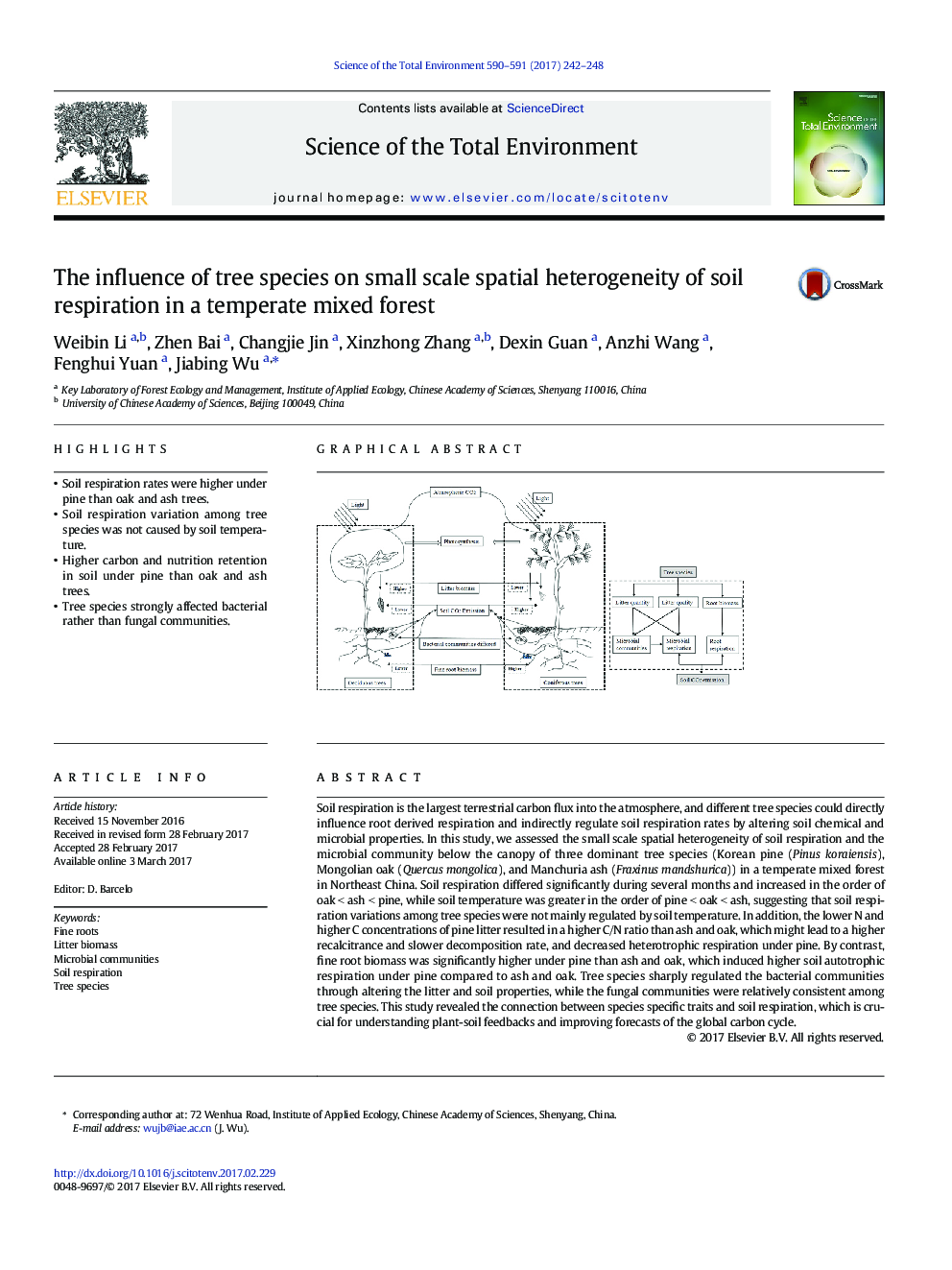| کد مقاله | کد نشریه | سال انتشار | مقاله انگلیسی | نسخه تمام متن |
|---|---|---|---|---|
| 5751039 | 1619704 | 2017 | 7 صفحه PDF | دانلود رایگان |
- Soil respiration rates were higher under pine than oak and ash trees.
- Soil respiration variation among tree species was not caused by soil temperature.
- Higher carbon and nutrition retention in soil under pine than oak and ash trees.
- Tree species strongly affected bacterial rather than fungal communities.
Soil respiration is the largest terrestrial carbon flux into the atmosphere, and different tree species could directly influence root derived respiration and indirectly regulate soil respiration rates by altering soil chemical and microbial properties. In this study, we assessed the small scale spatial heterogeneity of soil respiration and the microbial community below the canopy of three dominant tree species (Korean pine (Pinus koraiensis), Mongolian oak (Quercus mongolica), and Manchuria ash (Fraxinus mandshurica)) in a temperate mixed forest in Northeast China. Soil respiration differed significantly during several months and increased in the order of oak < ash < pine, while soil temperature was greater in the order of pine < oak < ash, suggesting that soil respiration variations among tree species were not mainly regulated by soil temperature. In addition, the lower N and higher C concentrations of pine litter resulted in a higher C/N ratio than ash and oak, which might lead to a higher recalcitrance and slower decomposition rate, and decreased heterotrophic respiration under pine. By contrast, fine root biomass was significantly higher under pine than ash and oak, which induced higher soil autotrophic respiration under pine compared to ash and oak. Tree species sharply regulated the bacterial communities through altering the litter and soil properties, while the fungal communities were relatively consistent among tree species. This study revealed the connection between species specific traits and soil respiration, which is crucial for understanding plant-soil feedbacks and improving forecasts of the global carbon cycle.
257
Journal: Science of The Total Environment - Volumes 590â591, 15 July 2017, Pages 242-248
